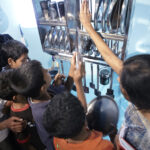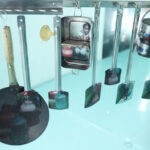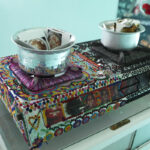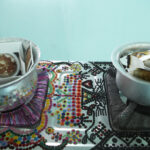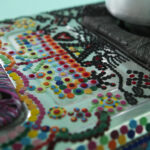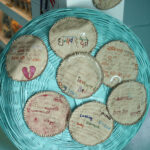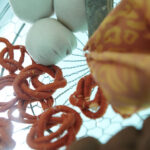GHAR PE: DHARAVI PROJECT
- COMMUNITY ART | PHOTOGRAPHY

















GHAR PE: Dharavi project 2012
SNEHA invited me to be an artist-curator, help build a web between three different activities – photography, textiles and clay – and install the resulting art objects in a cohesive exhibition. The questions I started asking myself were: How to get the participants to think conceptually? Where can they communicate their ideas with the skills learnt in the workshops? How to effectively create an installation that can be easily approached by Dharavi residents who may have never visited an art gallery? Humans connect with common experiences. The common thread that I felt could connect all spheres was home and its objects.
The year-long collaboration, which I began with mapping the participants’ own houses and storytelling sessions based on common household objects, revolved around personal experiences of the domestic. We created an informal intimate space where women gathered to exchange stories and this particular space gradually metamorphosed into alternative networks of kinship and solidarity beyond the family. These networks generated local civic activism around questions of health, sanitation, and empowerment. Each artist was assisted in actualizing their concept from their workshop.
The year-long story-telling sessions culminated in the exhibition Ghar Pe/Ghari/At Home. The installation came in stages. The idea of the house was becoming a reality and what propelled the vision was when the team selected household objects of significance to the community such as a charpoi (bed), television cabinet, gas stove, etc. For instance the stove and a number of kitchen elements stood as a symbol of domestic violence. The physical presence of these domestic objects made it easier for these women participating in the workshop to actualize and mature their concepts further. The team found an exhibition hall in Dharavi, a rundown classroom rented from a local high school that was renovated and painted turquoise. What I am really proud of is that all the furniture and objects used were second-hand and recycled. The household objects were curated in a way that made them look as though they were floating loosely to abstract the space. The walls of the exhibition room had objects and images commonly seen on Dharavi streets such as a shutter, ladders, asbestos and tin roofs, plumbing, etc. It was almost as if everything had been turned inside out or outside in.
The participants spoke to children, inspectors, artists, industrialists, government officials and various others about their thoughts and vision of Dharavi. The confidence I saw in some women who had never stepped outside their homes was enthralling. These women who had entered shy and unconfident were bubbling with a new-found energy of their inner strength.
This project had a language that was easily accessible and communicative; it was an aesthetic and experiential space, which possessed an innocent but mature concepts and a team that was full of passion and belief in their vision.
READ MORE
Welcome Trust
Dekha Undekha Diaries
Asian Art Archive
PRESS
Time Out
Mumbai Mirror
Women’s Featured Service
Random Specific
MORE IMAGES










